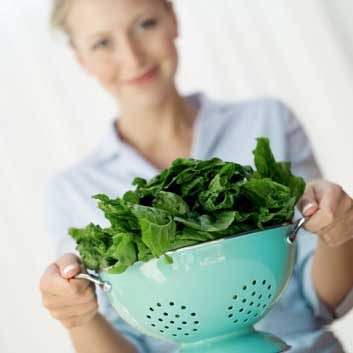
The importance of iron
Iron is a workhorse nutrient: It makes your cells work properly, sharpens your concentration and memory, drives your body’s energy supplies, helps form hemoglobin in your red blood cells that carries oxygen to every part of your body, and may even ward off depression. Yet millions of Canadian women of reproductive age don’t have enough. “Probably 20 percent of menstruating North American women are deficient in iron,” notes Dr. William Ehman, an assistant professor in the faculty of medicine at the University of British Columbia, and a family physician in Nanaimo, B.C., who regularly sees iron-deficient women in his practice. “The biggest misconception is that iron deficiency is always related to a poor diet, when the reality is, most women need to work to keep their iron levels up.” For example, if you menstruate heavily, your doctor might recommend birth control such as the pill or an IUD to lessen overall menstrual bleeding. Read on to discover the surprising facts about iron deficiency and how you can get-and keep-enough in your body.
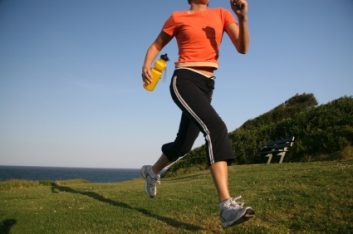
Surprise #1
Lots of women-not just vegetarians and pregnant women-find it hard to get enough iron.
“During pregnancy, your body needs more iron, but it’s hard to meet your increased needs through diet alone,” notes Dr. Nan Schuurmans, an Edmonton obstetrician and co-author of the book Healthy Beginnings. Your healthcare provider may prescribe an iron supplement that you will need to take along with your prenatal vitamins.
As for vegetarians, because they do not eat meat (which is rich in iron), Dietitians of Canada recommends that they eat greater amounts of iron-containing fruit, vegetables, grains, nuts and beans in order to get adequate amounts of the nutrient. “However, vegetarians who make proper food choices don’t have a higher incidence of iron deficiency compared to non-vegetarians,” says Vesanto Melina, a registered dietitian in Langley, B.C., who specializes in vegetarian and vegan nutrition, and is co-author of a joint position paper on vegetarian diets from the Dietitians of Canada and the American Dietetic Association.
But you’re not home-free if you’re not in either of the above groups. Here are some other common causes of iron deficiency:
Poor iron absorption: This could be due to not eating enough iron-rich foods, or eating foods that can hinder the way your body absorbs this essential mineral. “Because iron is absorbed in the gut, faulty absorption could also be due to a digestive issue such as untreated celiac disease or colitis,” says Ehman. A 2010 study published in the International Journal for Vitamin and Nutrition Research suggested that people who are obese may not be able to absorb iron well. And absorption can be blocked for those taking large amounts of antacids such as ranitidine, or a proton-pump inhibitor (PPI) medication such as omeprazole or esomeprazole.
Too-vigorous workouts: If you are training extra-hard-for a half-marathon, for example- “you can lose small amounts of iron through sweat and urine,” explains Alex Paton, a Winnipeg registered dietitian who specializes in sport nutrition. Running can also cause minor GI bleeds (that the runner may not even notice) simply because the body is being jostled and shaken, she adds.
Another factor is foot strike-literally, red blood cells bursting in the feet when they hit the ground. (You might experience foot pain or extreme fatigue if this is the case.) “Running shoes with firm insoles decrease the amount of blood loss through foot strike,” notes Kamal Janakiraman, a researcher and physiotherapist who co-authored a 2011 study in Sports Medicine, Arthroscopy, Rehabilitation, Therapy & Technology.
Giving blood: Canada Blood Services screens donors for low iron levels and turns down anyone whose levels are below a certain amount. Blood donation causes a temporary drop in hemoglobin, but your body makes new red blood cells to replace those lost. It’s a good idea to eat iron-rich foods for a few days after donation, and space out your donations if your levels are in the low-normal range.

Surprise #2
Looking pale and feeling faint are not the only signs of iron deficiency.
The symptoms of iron deficiency can be vague, says Ehman. “Women come into my office talking about feeling fatigued and not being able to exercise the way they used to.” He adds that restless leg syndrome can also be a sign. Other possible symptoms are a red, inflamed tongue; dizziness; headache; difficulty maintaining body temperature; shortness of breath; brittle nails; irritability; and rapid or irregular heartbeat. In mild cases, you might not notice any symptoms at all. Your doctor can order blood tests to check your iron levels.
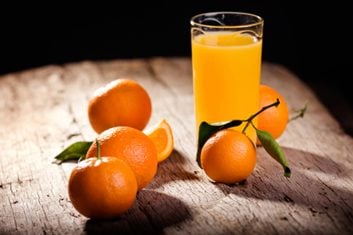
Surprise #3
You can usually get enough iron from your diet.
The good news is, you don’t have to eat bales of spinach or a Fred Flintstone-size steak. But it’s important to understand there are two kinds of iron, explains Vinnci Tsui, a registered dietitian in Calgary, who often advises clients about iron intake. “Heme iron, which comes from meat or seafood, is absorbed more readily by the body,” she says. Non-heme iron, which comes from plants and vegetables, can also be a source of iron, but the body doesn’t absorb it as well. You have to combine it with foods that are rich in vitamin C, which helps the body absorb the non-heme iron more efficiently.
“Enjoy a mixed bean salad made with lemon vinaigrette and topped with chopped tomatoes, so you get iron from the beans and vitamin C from the lemon and tomatoes,” Tsui suggests. “Trail mix made with pumpkin seeds, raisins and dried apricots for iron, along with dried cranberries for vitamin C, is also great.”
Melina, co-author of Cooking Vegetarian, recommends a stir-fry made with tofu, red peppers and pineapple juice. Most grain products like pasta, bread and cereal are fortified with added non-heme iron, so your daily levels could add up without too much difficulty. For example, a package of enriched instant oatmeal contains up to 6.7 mg of iron, while a bagel can have 3.2 mg.
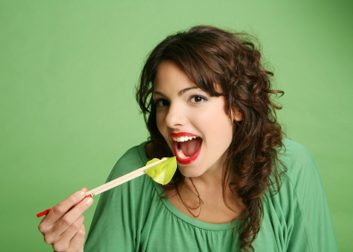
Surprise #4
A healthy diet does not guarantee good iron levels.
You eat lots of whole grains, drink tea and snack on nuts-all good ideas. However, your healthy eating habits could accidentally be derailing your iron intake. “Natural chemicals called phytates are found in the outer coating of nuts, legumes, seeds and grains, as well as soy,” says Tsui. “Those phytates interfere with the absorption of iron.” Once again, eating vitamin C-rich foods helps to counteract the effects. Adding sprouted seeds or roasted nuts (for example, sprinkling sprouted sunflower seeds on a salad) also reduces the phytate content. So sprouted-grain bread rather than regular bread, as well as fermented products, such as tempeh (rather than tofu) or sourdough bread, are all good choices if you’re trying to increase your iron intake, says Tsui. Cook up some onion and garlic with your legumes, too-a 2010 study in the Journal of Agricultural and Food Chemistry found that adding them enhanced absorption of the iron in legumes by up to 73 percent.
Plant substances called polyphenols, found in black tea, herbal teas, coffee and wine, also interfere with iron absorption; consider drinking it a half hour or so after eating, says Paton. Some studies have also found that a calcium supplement taken with a meal can block iron, so take it at bedtime if possible.
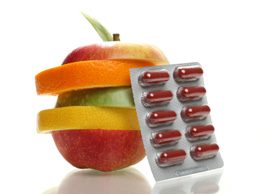
Surprise #5
Taking a supplement “just in case” is not a good plan.
“Unless a person is iron deficient and the cause is known, healthy people do not usually need to take iron supplements,” says Ehman. “The supplemental iron can accumulate in the body and cause illness.” This overload doesn’t happen when people eat iron-containing foods, he adds. Tsui agrees. “Follow Canada’s Food Guide and you should be able to meet your nutrition needs through food alone. If iron is a concern, just pay attention to eating a variety of iron-rich foods and choose a vitamin C-rich fruit or vegetable at every meal.”
And be sure to talk to your doctor if you are concerned about a prescribed iron supplement. “Don’t just stop taking it,” cautions Ehman. Some may be spooked by a widely reported 2011 study that drew on the Iowa Women’s Health Study, in which nearly 39,000 women with a mean age of 61.6 were tracked for more than 20 years.
It found that those who took supplements, particularly iron supplements, had a higher risk of death over the course of the study compared to those who didn’t pop a supplement. However, since women over 50 generally have low iron levels only due to serious illness (for example, bleeding from a bowel tumour), it’s unclear whether the deaths were due to those conditions or to taking unnecessary supplements.
Related:
• 5 things you need to know about iron
• Anaemia
• What do vegans eat?
